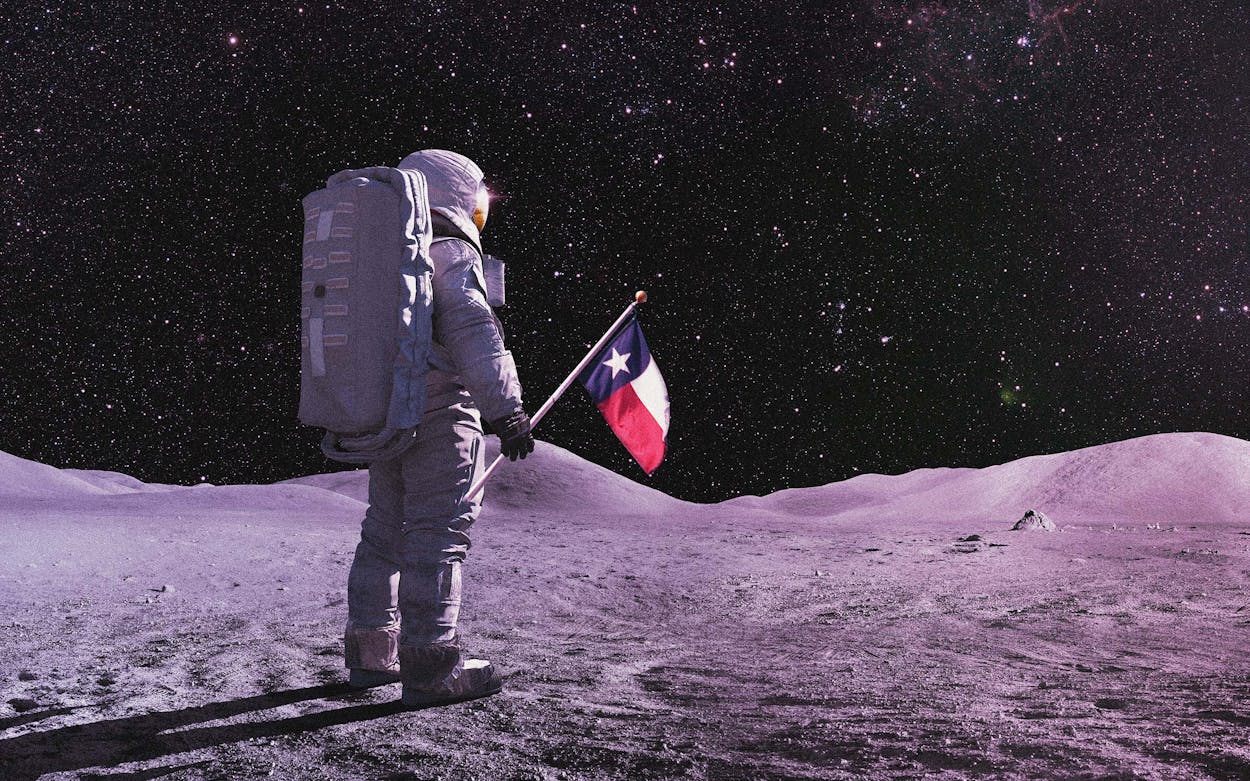“Why, some say, the moon? Why choose this as our goal?” asked President John F. Kennedy during a 1962 speech at Rice University’s football stadium. “Why does Rice play Texas?” We are a bold and confident people, he explained, willing—nay, eager—to take on difficult challenges simply to prove that we can.
In comparing the ambitions of NASA’s Apollo program to the Owls taking on the Longhorns, Kennedy hinted at a notion that we’ve chosen to embrace wholeheartedly: the moon is spiritually, if not geographically, part of Texas. After all, Houston is home to our nation’s human spaceflight program—where the astronauts train and where Mission Control guides them. The first word spoken on the moon, if you ignore some technical mutterings from Buzz Aldrin, was “Houston.”
But in the years since Neil Armstrong’s “one small step,” America’s claim to this celestial annex of our great state has waned. No U.S. spacecraft has touched the moon since 1972, while four other nations have: the Soviet Union, which successfully landed seven uncrewed craft between 1966 and 1976; China, which made three uncrewed visits between 2013 and 2020; India, which made its first uncrewed trip in 2023; and Japan, which succeeded with an uncrewed vessel just last month.
The 52-year drought in American landings, however, is approaching its end. Thanks, yet again, to Texas.
On Thursday, Houston-based Intuitive Machines (in partnership with NASA and SpaceX) will launch its Odysseus lander. On Wednesday, it put the spacecraft into successful orbit, bringing it roughly the same distance from the moon’s surface as the west Houston suburb of Katy is from the Johnson Space Center. By later this afternoon, we should know if Odysseus has successfully made its landing. (Update, 7 p.m.: the landing was a success.)
If all goes as planned, this will mark just a first step in a full-blown American return to space exploration. NASA’s Artemis program expects to put humans on the moon again as soon as September 2026, after a crewed flyby next year. At least two additional crewed landings are planned before the end of 2030.
The moon is also the most logical place to test technologies that will allow humans to reach Mars. A crewed flight to the Red Planet would take at least seven months, while the moon is quick three-day trip. Building the infrastructure to sustain human life far from Earth will require a lot of practice, and it makes sense to develop that closer to home, before we attempt to colonize our solar system neighbor.
And of course, all manner of scientific research could benefit as well. As just one example among many, there are advantages for pharmaceutical companies to research, develop, and even manufacture in low- and microgravity environments. Currently, this sort of work has to compete for limited space and time on the International Space Station (which is set to be decommissioned in 2030 anyway). A lunar research lab could offer significant advances in treating terrestrial conditions. But even if all of that weren’t the case, there remain emotionally rousing reasons to return to the moon.
Call us saps, but we still find space travel inspiring, even six decades after Kennedy announced his moon shot. Humans have figured out a way to land a ship on the moon and get out and walk around. In the best-case scenario, some of them will live there, conducting research and expanding the boundaries we’re capable of. What else might we accomplish? It’s the f—ing moon! It’s the thing up in the sky! And it’s also part of Texas. How can you not feel stirred in your soul by that?








